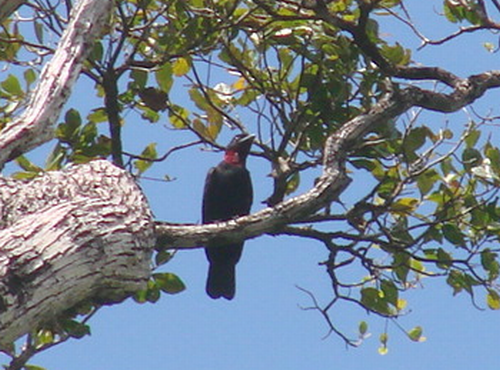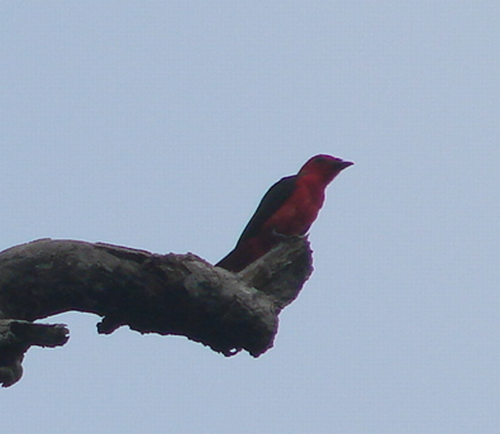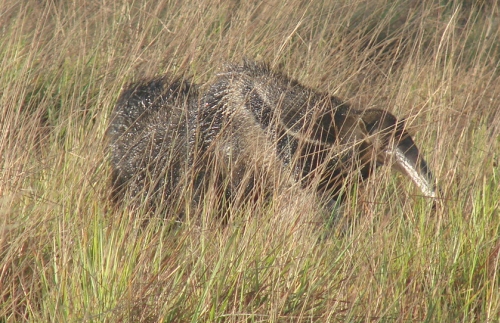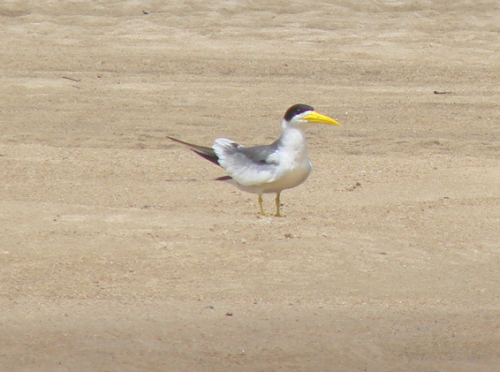The very word “cotinga” evokes the tropics like no other. I haven’t seen a great number of species in this group, but those I have been fortunate enough to encounter have certainly made an impression, especially the large, colorful species known as fruitcrows.
Purple-throated Fruitcrow has a wide range in southern Central and South America, and for a trpoical bird, it’s fairly easy to see. I was interested to find them mostly fairly high in the trees in Guyana, while in Panama I’ve several times enjoyed them at eye level.

Clear out at the other end of the scale is the apparently rare, and certainly little known, Crimson Fruitcrow. Males such as this one certainly live up to the name; this is a big, bright bird. We eventually saw two, both males; the females are duller and probably even easier to overlook.

The males are said to have a parachuting display in which they rise 10 meters above the canopy. More significantly to Guyana’s burgeoning ornithotourism industry, they are also rumored to be creatures of habit, often using the same perch for long periods of time. If individuals like this turn out to be reliably findable by tours, the species will be a major draw to visiting birders from around the world.







